Tabernacl Independent Chapel is situated at Cowell Street, Llanelli. It was built in 1872 by John Humphreys of Morriston in order to cater for the religious needs of the ever growing population of the town. It is possibly the most elaborate chapel in Llanelli, and houses a fine organ, built by Vowles of Bristol and which was installed in 1901. The chapel contains a fine leaded glass window which is dedicated to the sixteen members of the chapel who fell during World War One. Beneath the window is a brass plaque containing their names. Following the Second World War, a second plaque, containing the names of five more members of the Chapel was installed, to commemorate its members who fell during that conflict. The original photograph of the window was kindly supplied by Huw Edwards, while Dr Gethin Matthews has recently sent in photographs of the memorials.
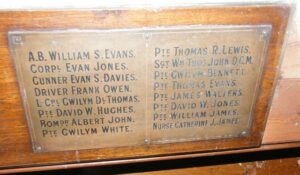

The Great War, 1914-1918
Gwilym Bennett, Private, 46765, South Wales Borderers. Gwilym was the son of David John Bennett and Cecilia Bennett, of 6, Sandy Gate Terrace, Llanelli. He was educated at Pentip School prior to enlisting into the South Wales Borderers on 28 December 1916. He was posted to the 1st Battalion, South Wales Borderers, which was attached to 3 Brigade, 1st Division. Gwilym was invalided home and discharged from the army on 18 February 1919. He died at home of Pthisis at 10, Raby Street, Llanelli on 8 May 1919 as a result of sickness brought about by his military service. Gwilym is buried in Box Cemetery, Llanelli, together with his parents and several of his siblings. He was not commemorated by the CWGC for almost 99 years until being accepted for commemoration on Friday 23 February 2018 as a result of my research. His father David had been one of the original members of the 15th Welsh (Carmarthen Pals). Gwilym will be commemorated in the United Kingdom Book of Remembrance until the location of his grave is verified.
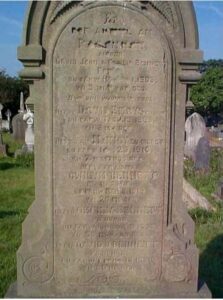
Evan Samuel Davies, Gunner, 141082, Royal Garrison Artillery. Evan was the son of Mr. Evan Davies, of 7, Delabeche Street, Llanelli. Evan worked as a shell filler in a munitions works prior to enlisting into the Royal Garrison Artillery on 28 February 1916, and was posted to France where he joined their 101st Siege Battery on 29 June 1917. Evan was wounded during the German offensive on the Lys, and died at 15 Casualty Clearing Station on 26 April 1918, aged 22. He is buried at Ebblinghem Military Cemetery, France.
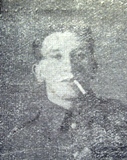
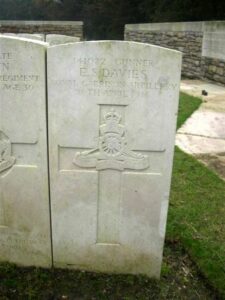
Thomas Evans, Private, 12866, Royal Welsh Fusiliers. Thomas was the son of Daniel and Mary Evans, of 40, Princess Street, Llanelli. He enlisted at Llanelli into the 9th Battalion, Royal Welsh Fusiliers, which moved to France in July 1915 as part of 58 Brigade, 19th (Western) Division. The Division fought at the Battle of Loos in September 1915, and moved to the Somme the following year, where it assaulted La Boisselle on 3 July 1916. Thomas was killed that day, aged 27. He has no known grave, and is commemorated on Pier and Face 4A of the Thiepval Memorial, France.
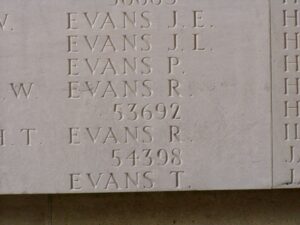
William Stephen Evans, Able Seaman, R/3420, Royal Naval Reserve. William was born on 16 March 1899, the son of David Samuel Evans, of Penlan, Tyrfran, Llanelli. He enlisted into the Pembroke Yeomanry, but transferred to the Royal Naval Reserve on 11 July 1917. On 6 August William was drafted to Nelson Battalion, which was attached to 189 Brigade, 63rd (Royal Naval) Division. He joined up with the battalion in time to take part in the Battle of Cambrai. William was killed in action during the Action of Welsh Ridge, on 31 December 1917. He was 29 years old, and is commemorated on the Thiepval Memorial, France. William was the first member of Tabernacl Chapel to fall during the war.
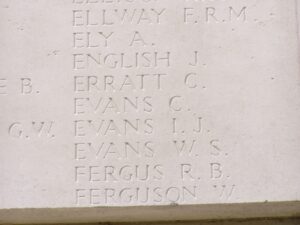
David Walter Hughes, Private, 23531, Dorsetshire Regiment. David was the son of John and Margaret Hughes, of 25, Old Castle Road, Llanelli, and the husband of Henrietta Griffiths (formerly Hughes), of Goring Villa, 21, Ellington Rd., Burry Port. David had been an Ironmonger’s Assistant prior to enlisting at Llanelli into the 6th Battalion, Dorsetshire Regiment. The Battalion was attached to 50 Brigade, 17th (Northern) Division, which had been in France since 17 July 1915. They spent their initial period of trench familiarisation and then holding the front lines in the southern area of the Ypres salient. Here they took part in fighting at the Bluff during February 1916 before moving south, where they fought at the Battle of Albert, where the Division captured Fricourt at heavy cost during the opening of the Somme Offensive. They then saw action during the Battle of Arras, at the First and Second Battles of the Scarpe and the Capture of Rouex, before moving back to Ypres, and taking part in the First and Second Battles of Passchendaele. In March 1918 the Division were on the Somme, and faced the German Spring Offensive there, fighting at the Battle of St Quentin, and retreated back, fighting at the First Battle of Bapaume. After a period out of the line to rest and rebuild, the Division moved to the southernmost sector of the Somme area, where they fought at the Battle of Amiens on 8 August 1918, a day which saw the war swing in the favour of the Allies. The Allies then advanced on the Somme, and the Division fought at the Battle of Albert later that month. It was here that David was killed in action on 24 August 1918. He was 26 years old, and is buried at Mill Road Cemetery, Thiepval, France.
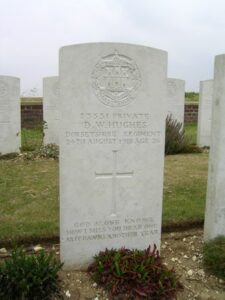
William James, Private. William cannot presently be identified.
Catherine Jane James, Nurse, St. John’s Ambulance Brigade. Catherine was the daughter of William and Mary James, of Llwynhelyg, Stradey Road, Llanelli. She served throughout the war as a Nurse with the St. John’s Ambulance, first at Porthcawl and then at Stebonheath. She contracted tuberculosis during the final months of the war and eventually died in Llanelli on 4 December 1919, aged 28. She was buried in Rehoboth Chapelyard at Five Roads. Catherine is not commemorated by the CWGC.
Albert John, Bombardier, 150673, Royal Garrison Artillery. Albert was the son of William Henry and Jane John, of 113, Old Castle Road, Llanelli. He enlisted at Llanelli into the Royal Garrison Artillery, and was posted to France, where he joined the 498th Siege Battery, RGA, which was attached to the Fourth Army. Albert took ill during the time of the Advance on the Hindenburg Line, and died in hospital on 14 September 1918. He was 21 years old, and is buried at Terlincthun British Cemetery, Wimille, France.
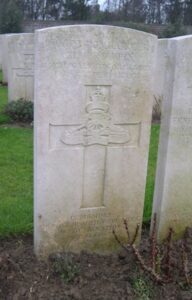
William Thomas John, DCM, Sergeant, 20155, Welsh Regiment. William was the son of William and Margaret John, of 4, Cawdor Row, Llanelli. He enlisted at Llanelli in February 1915 into the 15th Battalion, Welsh Regiment, which was known as the Carmarthen Pals battalion. The battalion trained at Rhyl and Winchester, before landing in France on 2 December 1915 attached to 114 Brigade, 38th (Welsh) Division. The entire Division moved to the Fleurbaix sector, where it was initiated into trench warfare. During June 1916 the Division marched south to the Somme, and on 7 July 1916 attacked Mametz Wood. The initial attack failed, and it was three days later, on 10 July, that a fresh attack was mounted. After two days of heavy hand to hand fighting within the wood, the Germans withdrew, and the battered Welshmen moved via Hébuterne to Boesinghe, on the Yser Canal, where it remained until launching its attack on Pilckem Ridge on 31 July 1917. The 15th Welsh remained in the line, and also took part in the Battle of Langemarck, before the entire Division was moved to positions near Armentieres over the winter. After the Germans launched their offensive on the Somme on 21 March 1918, the Division was moved back to the Somme, and took up positions north of Albert, around Aveluy Wood. On 21 August 1918 elements of the 15th Welsh crossed the River Ancre, and set up a bridgehead, which enabled the rest of the battalion to cross, and in the coming days advanced and captured Thiepval and Pozières Ridges. The Division then drove on past Longueval to the Canal du Nord and the Hindenburg Line, before turning towards Le Cateau and the Forest of Mormal. William gained the award of the Distinguished Conduct Medal, on 20 October 1918, when his platoon commander was killed whilst swimming the Selle, and he took command of the Platoon. The citation to the award stated that; ‘He at once took command, and on emerging from the river re-organised his platoon under heavy machine-gun fire, and led them forward, capturing a machine gun and crew, and turning the gun on the enemy. He then pushed forward again and captured two small enemy trench howitzers. He showed gallant leadership and did excellent work.’ Sadly William was wounded that day, and died on 2 November 1918, aged 21. He is buried at Forest Communal Cemetery, France.
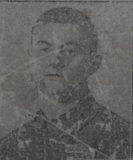
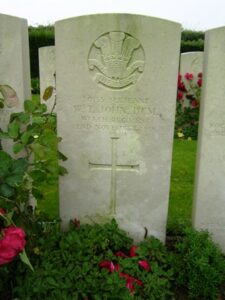
David Wynne Jones, Private, 5161, Welsh Regiment. David was the son of David Walter Jones and Jane Jones, of Castle Inn, Hall Street, Llanelli. He enlisted at Llanelli into the 1/4th Battalion, Welsh Regiment, which was the local Territorial Battalion, attached to 159 Brigade, 53rd (Welsh) Division. The Division landed at Cape Helles, Gallipoli, on 9 August 1915, and was immediately thrown into action, spending the next few days in isolated pockets, fighting against a Turkish counter-attack during the Battle of Sari Bair. David was killed here on 10 August 1915. He was 22 years old, and is buried at Green Hill Cemetery, Gallipoli.
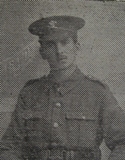
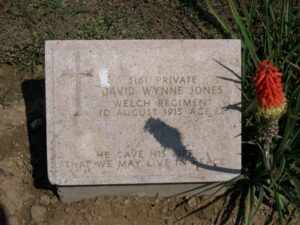
Evan Jones, Sapper, 448158, Royal Engineers. Evan was the husband of Mary Charles Jones, of 31, Ralph Terrace, Llanelli. He had served with the Welsh Field Company, Royal Engineers at Gallipoli, but had returned home after being wounded there. Evan was then posted to the 9th Division Signal Company, Royal Engineers. In March 1918 the Division was in the Cambrai area, and was one of the Divisions hit there by the German Spring Offensive, seeing heavy fighting at the Battle of St Quentin. Evan was wounded here, and died on 11 April 1918. He is buried at Arneke British Cemetery, France. His brother, Ivor Sidney Jones, also fell.
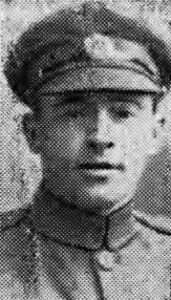
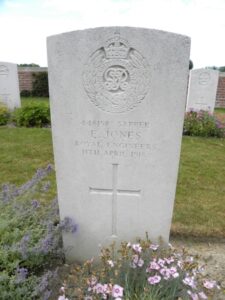
Thomas Richard Lewis, Private, 37060, East Yorkshire Regiment. Thomas was the son of Jonathan and Martha Lewis, of Winilan, Boncath. He lived at Llanelli prior to the war and enlisted there into the Pembroke Yeomanry, with the Service Number 5189. After training he was posted to France, joining the 1st Battalion, East Yorkshire Regiment, attached to 64 Brigade, 21st Division. In the late summer of 1917 the Division moved to Ypres to take part in the Battle of Passchendaele, and later that year moved south to take part in the Battle of Cambrai. In 1918 the Division was in the St. Quentin area when the German Offensive hit, and suffered heavy casualties during the ensuing withdrawal. The Division then moved to Flanders to rest, but in April 1918 the Germans launched an offensive on the Lys. The Division was hit here, and fought at the Battle of Messines, 1918, and then the Second Battle of Kemmel. The Division was one of several that by now had become seriously weakened, and it was moved to a quiet French Sector near Soissons to rest. However, the Germans launched an offensive here, and the Division saw action again, during the Battle of the Aisne. In August, 1918 the British launched a series of offensives on the Somme, which were to ultimately lead to victory. The Division moved north, and took part in the Battle of Albert on 21 August 1918, which marked the start of the advance to victory. They then pushed east, and saw action at the Battle of Bapaume, the Battle of Épehy, and the Battle of the St Quentin Canal, which saw the mighty Hindenburg Line broken. Thomas was killed in action here on 27 September 1918. He was 27 years old, and is buried at Glageon Communal Cemetery Extension, France.
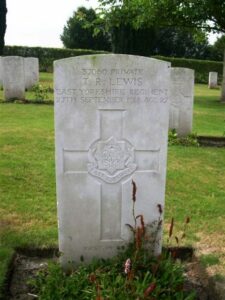
Frank Owen, Driver, 9677, Royal Field Artillery. Frank was the son of William and Margaret Owen, of 21, Emma Street, Llanelli. He enlisted at Llanelli into the Royal Field Artillery, and served in France with the 8th Divisional Ammunition Column from 9 July 1915. Frank was wounded during the Battle of the Lys, and died at the 47th General Hospital on 15 July 1918, aged 33. He is buried at Mont Huon Military Cemetery, Le Treport, France.
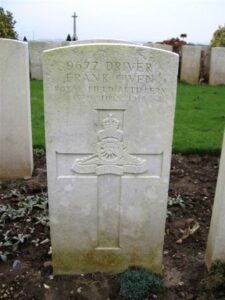
Gwilym Daniel Thomas, Private, 203008, South Lancashire Regiment. Gwilym was the son of John and Frances Thomas, of 73, Bigyn Hill, Llanelli. He enlisted at Llanelli on 1 September 1914 into the Royal Welsh Fusiliers, and was posted to France on 19 July 1915 with the 9th Battalion, Royal Welsh Fusiliers. On 6 September 1917 Gwilym was admitted to 58 Field Ambulance after being wounded, and during December 1917 returned to England. During 1918 he returned to France, and was posted to the 2/4th Battalion, South Lancashire Regiment, which was attached to 172 Brigade, 57th (2nd West Lancs) Division. In August 1918 they took part in the great advance, and Gwilym was killed during the Battle of The Scarpe, on 28 August 1918. He was 25 years old, and is commemorated on the Vis-En-Artois Memorial, France.
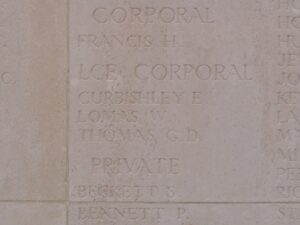
James Walters, Gunner, 188021, Royal Field Artillery. James was the son of Evan and Mary Walters, of 25, Raby Street, Llanelli. He worked at the Gorse Galvanising Works at Dafen prior to enlisting at Llanelli into the Royal Field Artillery. James was posted to France, where he joined ‘Y’, 17th Trench Mortar Battery, RFA, which was attached to the 17th (Northern) Division. James was killed during the first day of the German Spring offensive, during Battle of St. Quentin on 21 March 1918, aged 25. He is commemorated on the Arras Memorial, France.
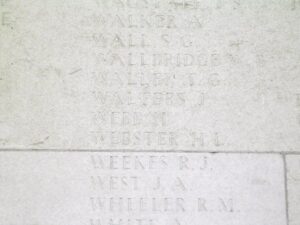
Gwilym White, Private, 74010, Welsh Regiment. Gwilym was the son of William and Elizabeth White of Llanelli. He had enlisted at Llanelli into the army, and in 1918 was posted to France where he joined the 15th Battalion, Welsh Regiment, the Carmarthen Pals battalion, which was attached to 114 Brigade, 38th (Welsh) Division. Gwilym joined the battalion on the Somme, and would have taken part in the famous crossing of the River Ancre by the 15th Welsh on 21 August 1918. The Welsh Division then drove across Thiepval and Pozières Ridge, before embarking on their part of the great offensive, towards the Hindenburg Line. Gwilym was killed during the Battle of Épehy, on 19 September 1918, aged 24. He is commemorated on the Vis-En-Artois Memorial, France.
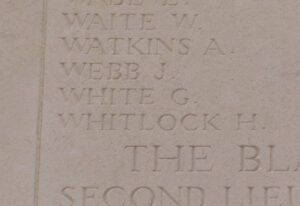
World War Two, 1939-1945
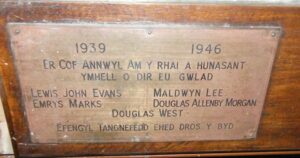
Lewis John Evans, Gunner, 3953853, Royal Artillery. Lewis was the son of William Henry and Margaret Jane Evans, of Llanelli. He served with 484 (Carmarthenshire) Battery, 4 Searchlight Regiment, Royal Artillery, which was in Malta, forming part of the anti-aircraft defences of the island. On 20 April 1942 Malta came under heavy attack by Axis bombers, and suffered a large amount of damage and casualties. Lewis was killed that day. He was 35 years old, and is buried in Pieta Military Cemetery, Malta.
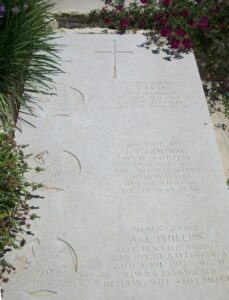
Maldwyn Herbert Lee, Leading Aircraftman, 1316626, Royal Air Force Volunteer Reserve. Maldwyn was the son of David and Alice Lee, and the husband of Margaret J. Lee, of Dafen. He served with the Royal Air Force at Bone Airfield, in Algeria. Maldwyn died, probably in an air crash over the Mediterranean, on 19 June 1944. He was 28 years old, and is commemorated on the Malta Memorial, Malta.
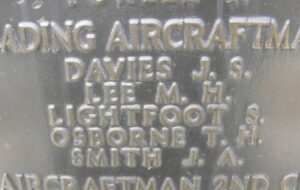
Emrys Owen Marks, Fusilier, 4198416, Royal Welch Fusiliers. Emrys was the son of Mr. and Mrs. John Marks, of Llanelli. He served with the 1st Battalion, Royal Welch Fusiliers. The battalion had seen heavy fighting during the retreat to Dunkirk in 1940, and after rebuilding was despatched to the far East. Emrys was killed in Burma on 18 March 1943. He was 26 years old and is commemorated on the Rangoon Memorial, Myanmar.
Douglas Allenby Morgan, Private, 7607332, Royal Army Ordnance Corps. Douglas was the son of Thomas David and Eliza Lenden Morgan, of Llanelli. He served with 4 Base Ordnance Depot, Royal Army Ordnance Corps, which was in France with the BEF when the Germans attacked France on 10 May 1940. Douglas was killed during the retreat to Dunkirk on 20 May 1940, aged 22. He is commemorated on the Dunkirk Memorial, France.
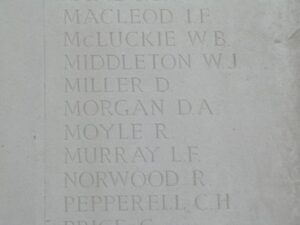
Douglas West, Private, 1494432, Royal Warwickshire Regiment. Douglas was the son of John and Eleanor West, of Llanelli. He served with the 1st Battalion, Royal Warwickshire Regiment. The battalion spent most of the war in India. Douglas was returning home aboard a Consolidated Liberator VI, Serial KH125, when the aircraft was hit by lightning while flying over Rochefort, France on 3 December 1945, and lost a wing. The aircraft crashed into the ground near the town, killing all 28 passengers and crew who were aboard. Douglas was 27 years old when he died in the crash, and is buried besides the other casualties in Rochefort-Sur-Mer Naval Cemetery, France.